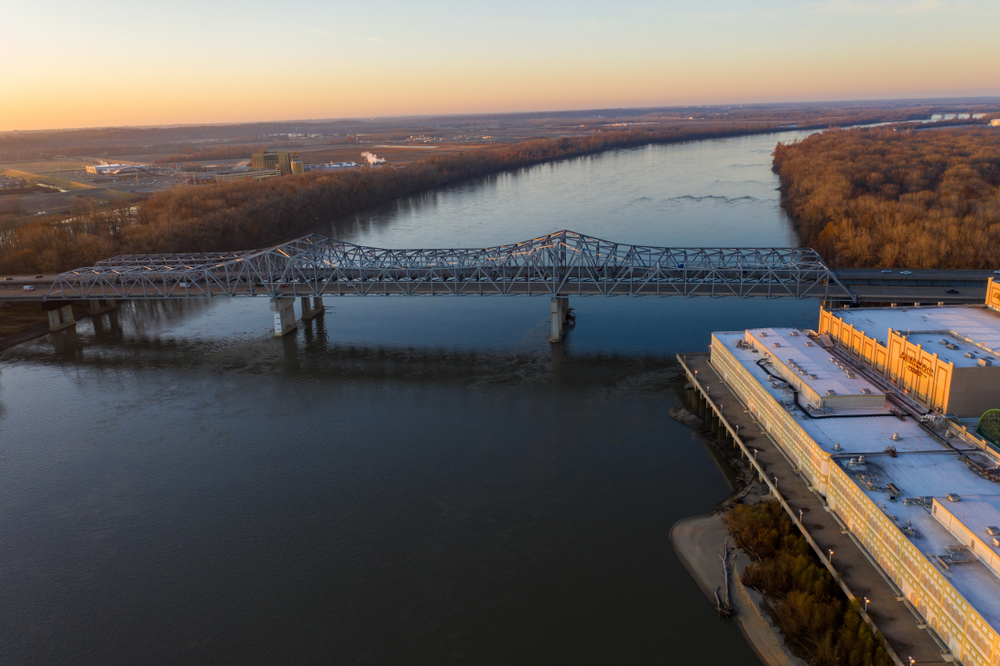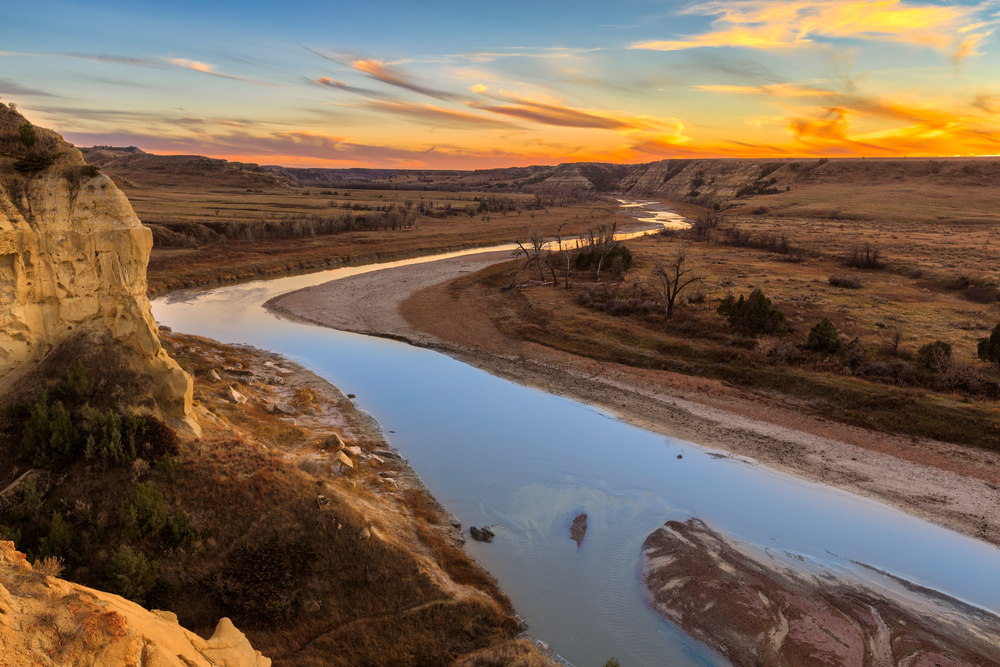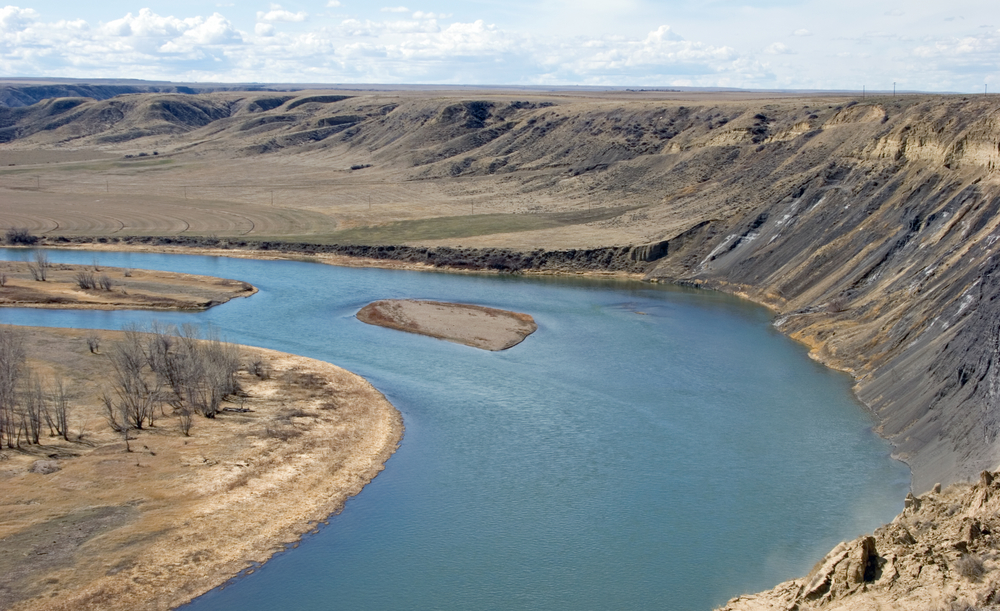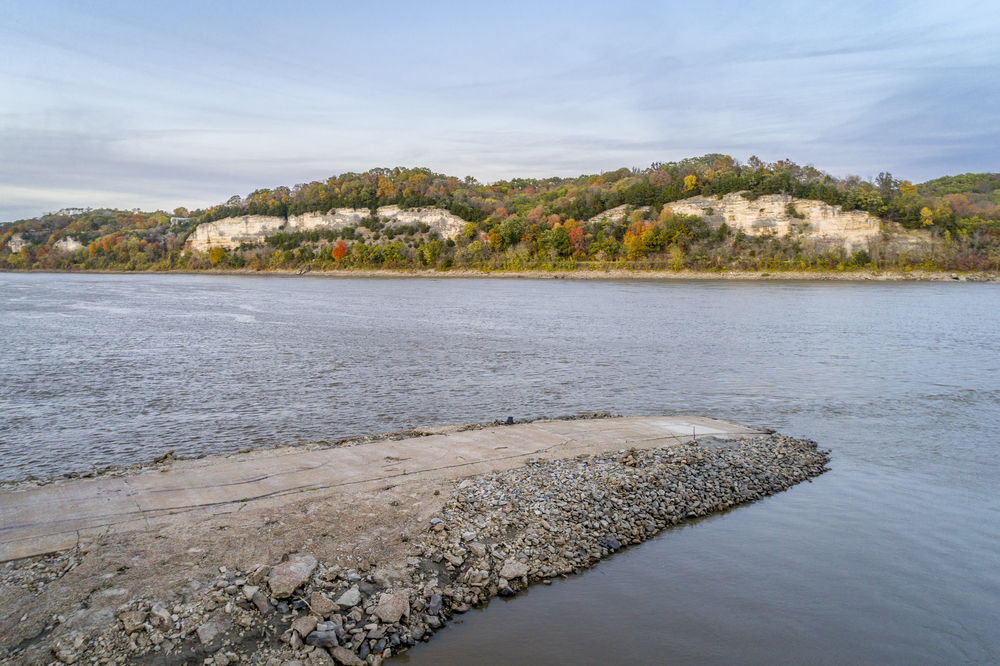When it comes to rivers in America, the Missouri River is by far the most talked about. This river makes up one of the greatest river systems that run from the northern to southern parts of North America.
Plus, its deepest point is found in one of the most historically rich states in the U.S.
If you want to know how deep this river can get, you’re not alone – keep on reading to learn more.
While there are variations in the elevation of the Missouri River, the same can be said for its depth. At its shallowest point, the Missouri River can be anything between 10 and 20 feet. However, it gets much deeper than this.
At its deepest point, near New Orleans, the Missouri River can reach an astonishing 200 ft.
Table of Contents
History of the Missouri River

Did you know that the Missouri River is the second-largest river in North America? Out of all the tributaries of the Mississippi River, the Missouri River is by far the longest.
High in the Rocky Mountains, there is a confluence that forms between the Gallatin, Jefferson, and Madison Rivers.
This major confluence is what forms the famous Missouri River. The Missouri River alone has a total length of 2,315 miles, depending on the sources that you consult.
Some say that you can’t calculate the proper length of the Missouri River without considering the Red Rock River, which is found at the upper part of the Jefferson River. Both these rivers combine to create a large river system.
As a result, the total length of the Missouri and the Red Rock River systems is estimated to be 2,540 miles. In fact, it’s known as one of the longest river systems in the North American region.
How does the Missouri River flow?
The Missouri River flows in a northward direction. It flows through Great Falls, then changes to a northeastern direction while traveling towards the west of Montana.
Additionally, the drainage basin of this river is something else. For one, it’s located within 529,000 square miles of the Great Plains. This means that a part of it can also be found in the southern parts of Canada and that it has a considerable elevation range.
The greatest elevation point is at about 14,000 feet and the lowest at just 400 feet above sea level.
Factors that affect the flow of the Missouri River

Since the flow of the Missouri River changes, it’s essential for you to know what factors contribute to these changes. Rivers are generally affected by similar issues.
In the Missouri River, the flow can be as high as 900,000 cubic feet, or it can be as low as 4,000 cubic feet.
The following are the major problems that can affect its flow:
- Soil erosion
- Unprotected slopes
- Silting
If you’ve ever noticed, you’ll see that the Missouri River carries a lot of muddy deposits. Even researchers in different parts of the world have nicknamed it Big Muddy.
The discovery of the Missouri River
For millions of years, there were native people who lived along the banks of this river. They used it for various purposes such as bathing, washing, cleaning, and irrigation.
In the 1600s, European explorers came across the mouth of the Missouri River, but they didn’t navigate along this river until the 1700s. Fur traders from France wanted to explore the vastness of this river and in the 1800s, they braved the unknown to find out more about this river’s headwaters.
This river was then used to help launch the fur trade. The economic boom of the fur trade along the Missouri River meant a decline in native people along its shores and an increase in settlers and machinery like steamboats.
The development of the Missouri River system

Two main railway systems, Hannibal and St Joseph, were eventually completed and offered a new way for traders to move their goods.
This alternative mode of transportation meant a huge decline in the steamboats that had previously dominated the headwaters of the Missouri River.
In short, more than a hundred years passed without much being done to develop this river.
Luckily, in the 1940s, the U.S government realized that this river could be used for power and irrigation. It created a program that would prove significant in improving flood control and developing this large water resource.
This program foresaw the role that the Missouri River and all its tributaries would play. For instance, a large number of dams and reservoirs would be built – a great step towards ensuring adequate channel maintenance.
Maintaining the Missouri River channel
When the 1950s came, another visionary program was implemented for this river system, with major dams such as the Fort Peck Dam and Gavin’s Point to be built.
These have been immensely helpful in reducing flooding that has occurred over the years along the Missouri River.
The river is also used for irrigation by millions of people in addition to serving as a hydroelectric power source for those who live along its shores.
Ensuring that these are maintained has helped to provide millions of people with safe water and electricity in a modern world that requires both.

Beyond these significant benefits, the Missouri River has become widely popular for its recreational uses. It offers scenic fun for tourists and residents alike, and there are various plant and animal species that thrive in the environment that the river provides.
Frequently Asked Questions:
1. Can you swim in the Missouri River?
While swimming along the Missouri River is possible, it’s not advisable – there are plenty of hazards that you’ll come across if you decide to go for a swim.
The currents can be fast and quite tricky, there are deeply submerged snags and rocks, and the river is filled with deep holes.
If you do decide to go for a swim, you should ensure that you’re extremely careful. This means not doing it alone and wearing protective gear.

2. What can you find in the Missouri River?
Like any other river, you’ll find gravel and sand particles beneath its surface. The alluvial deposits carry a lot of materials. So, in a way, what you find under the Missouri River is also smaller streams of rivers that carry these particles.
3. How wide is the Missouri River?
You’ll be surprised to know that the Missouri River was once estimated to have been around 10,000 feet wide. But lately, this has decreased significantly and it’s now just above 700 feet wide.

















